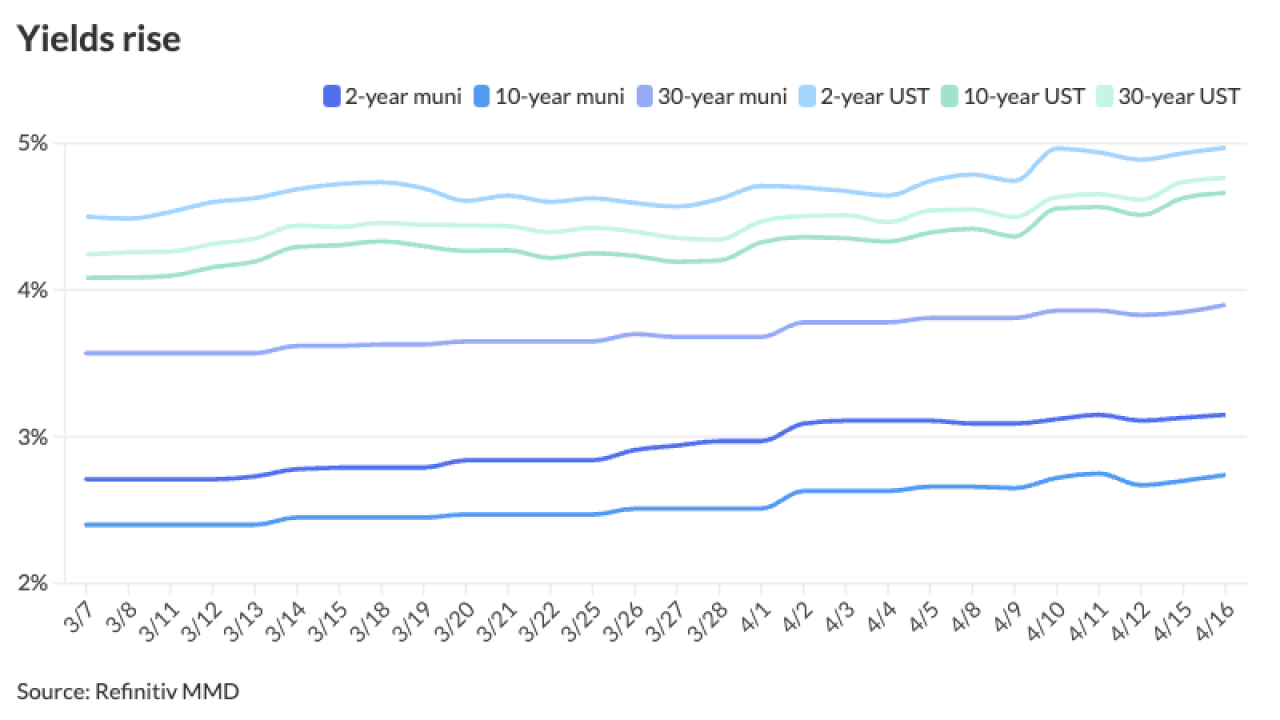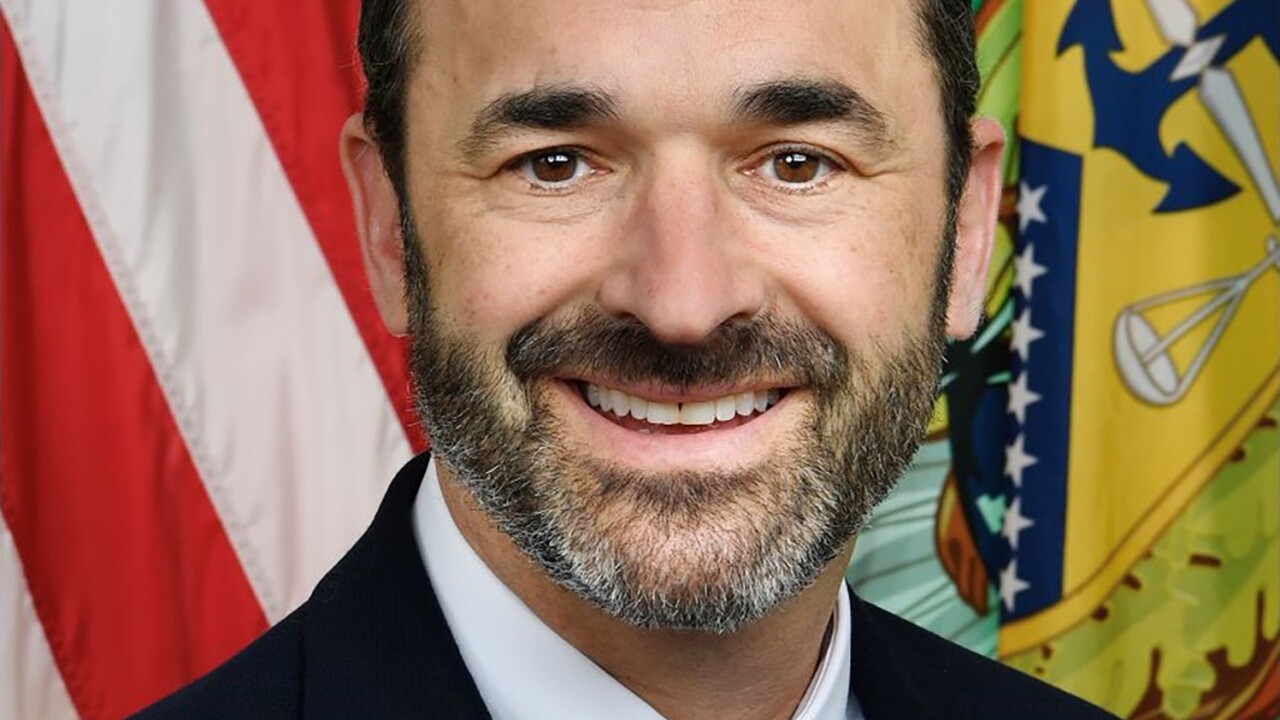
The municipal market saw a surge in new-issue supply this week and weakening Treasuries that drove high-grades cheaper and gave tax-exempts a heavier tone.
But the course of events emerged from seemingly auspicious beginnings. Puerto Rico came to market on Tuesday with $2.3 billion of public-improvement general obligation refunding bonds.
The offering had been upsized by $800 million and its pricing was accelerated. Traders said the deal — which represented the largest so far in 2012 — was priced to sell and did well.
But it was no bellwether. The rest of the week’s larger offerings received a cooler welcome, as the outpouring of supply arrived with large concessions.
Wednesday’s competitive deals from Maryland fared the worst. Yields for the deals hurtled 69 basis points higher for 3% coupons maturing in 2026 than those of the state’s equivalent negotiated bonds issued two days earlier.
In addition, a $502.2 million deal from the New York City Municipal Water Finance Authority arrived priced “significantly cheaper,” one trader said.
Municipal bond indexes mostly ended the week higher, particularly those outside of the short-term range. The Bond Buyer’s 20-bond index of 20-year general obligation yields increased 12 basis points this week to 3.84%, its highest level since Dec. 29, when it was 3.88%.
The 11-bond index of higher-grade 20-year GO yields rose 11 basis points this week to 3.58%. That is its highest level since Dec. 29, when it was 3.62%.
The yield on the U.S. Treasury’s 10-year note was unchanged this week at 2.03%. It continues to rest at its highest level since Feb. 9, when it was 2.04%.
The yield on the Treasury’s 30-year bond gained three basis points this week to 3.18%. That represents its highest level since Feb. 9, when it was 3.19%.
Deals the market saw sell a week ago capitulated downward 15 basis points in price from where they were last week, said Philip Villaluz, a managing director and head of municipal research and strategy at Sterne Agee.
“You’ve got dealers sitting on big balances and inventories of high-grades,” he said. “New issues this week were priced cheaply to sell, such as Puerto Rico. And those are trading up 10 to 15 [basis points], which is killing the secondary market.”
The worst shots to the muni market went to the belly of the yield curve, with the 10-year triple-A jumping 14 basis points on the week since last Friday. It also underperformed its Treasury equivalent, pushing its ratio to Treasuries cheaper at the 10-year mark to over 100% for the first time since Dec. 19.
The rest of the muni curve ended the week higher since Friday, but not significantly. Spots at the short and long ends also outperformed their Treasury equivalents.
The two-year muni yield inched up one basis point since Friday to 0.27%, rising from its all-time low. The 30-year muni increased four basis points over the same period to 3.31%.
The revenue bond index, which measures 30-year revenue bond yields, gained three basis points this week to 4.76%. It stands at its highest level since Feb. 9, when it was 4.77%.
The Bond Buyer’s one-year note index, which is based on one-year GO note yields, dropped just one basis point this week to 0.24%, but remained above its 0.23% level from two weeks ago.
The weekly average yield to maturity of The Bond Buyer municipal bond index, which is based on 40 long-term bond prices, increased two basis points this week to 4.59%. It is the highest weekly average for the yield to maturity since the week ended Jan. 26, when it was 4.67%.





